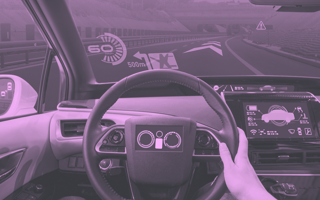Augmented reality technology has rapidly expanded, thanks to advancements that allow for a more seamless user experience. Not just limited to entertainment and gaming, AR technology is becoming a player in the automotive industry, promising a better — and safer — driving experience. But as is so often the case, AR innovation brings with it numerous legal challenges as it shakes up the industry.
Tracing the History and Resurgence of Automotive AR
AR first appeared in the automotive industry in 1988, when General Motors introduced a limited series of vehicles with heads-up displays (HUD). The HUD projected a two-dimensional digital speedometer and turn signals on the windshield. But the concept did not gain widespread traction across the marketplace for decades.
Today’s technological advancements now allow for a more sophisticated AR experience and new developments such as three-dimensional displays promise to enhance driver reaction time, visibility and navigation, leading to a resurgence in HUD implementation. Manufacturers are investing significant capital in HUD systems; the global automotive HUD market is estimated to grow at a compound annual growth rate of 31.3 percent, from $866 million in 2020 to $3.4 billion by 2025. HUD technology companies are the beneficiaries of this growth, but they must also be alert to potential legal challenges.
Developers Should Consider Indemnity Agreements
Potential legal risks associated with automotive AR technology are evolving as fast as the technology itself. Because AR systems interface with the driver while the vehicle is in motion, vehicle manufacturers utilizing HUD technology may be brought into litigation related to vehicle accidents. When integrating products directly into a vehicle, HUD developers should consider entering into indemnity agreements to limit and shift liability relating to HUD technology to vehicle manufacturers where feasible.
Cases alleging accident liability stemming from the use of automotive AR technology are still scarce, but cases involving cell phone use serve as a useful comparison. Not only has cell phone use become a focal point of driver safety efforts and regulations, cell phone manufacturers have been subject to litigation over accidents alleged to be caused by distracted driving. Cell phone manufacturers have largely avoided liability in these instances, as courts generally find there is neither a duty of care owed by these companies to victims of distracted driving nor a close connection between the manufacturers’ conduct and the resulting harm. Instead, courts typically find that it is the drivers’ improper use of cell phones that resulted in the collision.
Two Strategies for Manufacturers
Unlike cell phones, HUD displays are generally manufactured into the vehicle, and are explicitly designed to enhance the driver’s visual experience. Those distinctions limit a car manufacturer’s ability to argue that a driver misused the technology and may place manufacturers at greater risk of litigation. While the legal landscape remains uncertain, a few best practices may help lessen litigation risk.
First, manufacturers may consider implementing HUDs as optional features, allowing individual drivers to decide whether and when to utilize the technology. This puts the onus on the consumer to select the best system for their driving and may lessen drivers’ allegations that a purportedly distracting display system was imposed on a driver. Not only does this practice allow for user customization, but it may also serve to decrease litigation risk.
Second, while some HUDs may have the potential to improve safety, manufacturers should be cautious in marketing this technology as a safety feature. If a manufacturer markets that its HUD system will identify and warn the driver of all potential hazards, for example, risks may arise where the system fails to do so. In that scenario, a consumer may argue harm occurred by justifiable reliance on the technology. Manufacturers may therefore be better served by marketing HUDs as a technological feature, which could lessen the likelihood of these cases, as it preemptively subverts a driver’s “justifiable reliance” argument.
Avoiding the active marketing of HUDs as safety features may also lessen litigation risk based upon false advertising or fraud. Car manufacturers, for example, have been sued for misrepresentation when denoted safety features such as airbags were alleged to possess defects. While such claims will often fail without proof of a defect and manufacturer knowledge thereof, a change in marketing could reduce a manufacturer’s involvement in costly litigation.
Notably, more regulation of HUDs appears likely in the short term. The National Highway Traffic Safety Administration has issued guidance aimed at ensuring oversight and safety. These regulations may better help to guide manufacturers seeking to market HUDs as safety features.
As the proliferation of automotive AR continues, manufacturers should anticipate additional regulatory changes. Through changes in system implementation or marketing, manufacturers can continuously adapt their practices in order to better mitigate legal risk.





